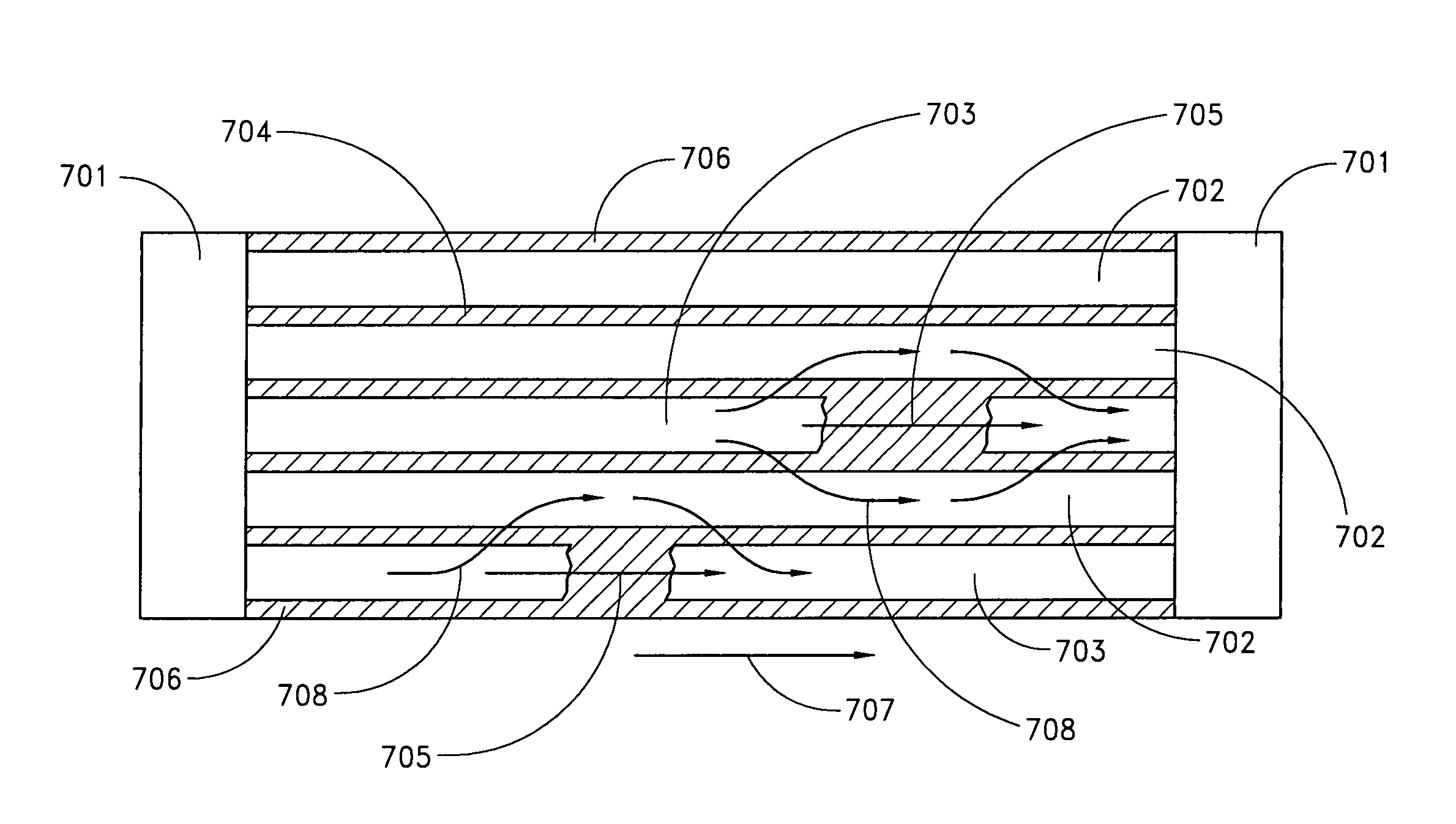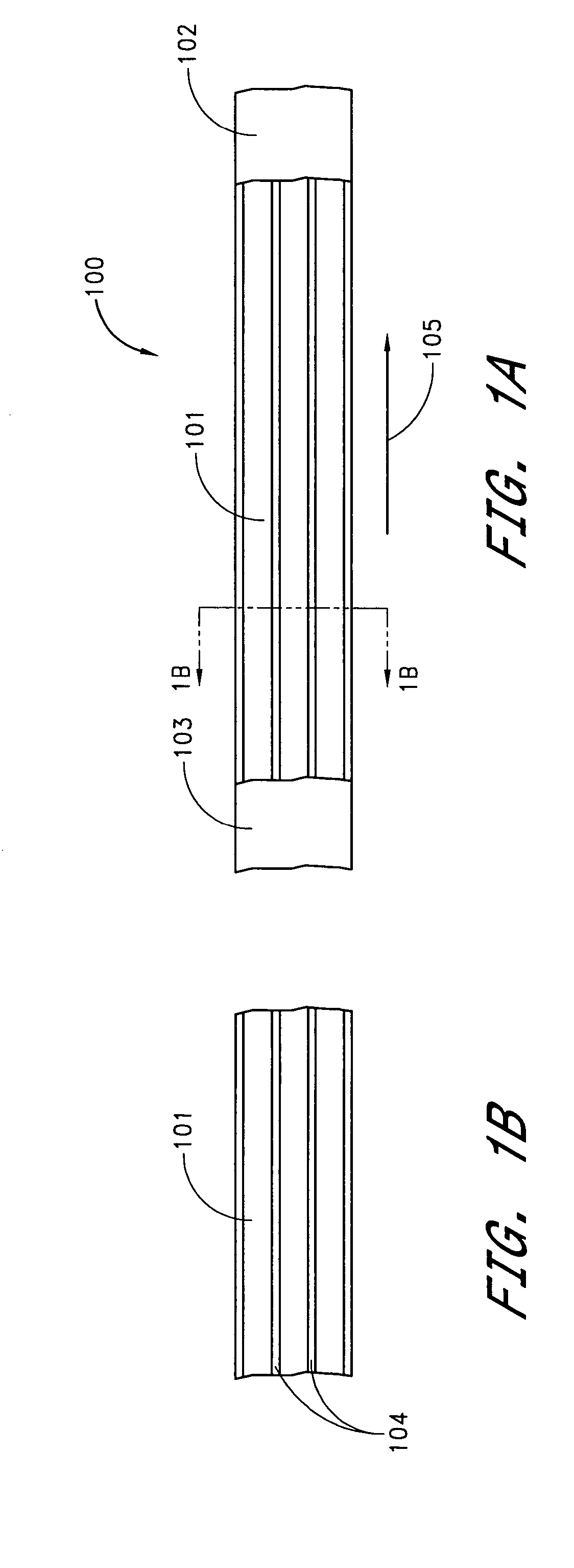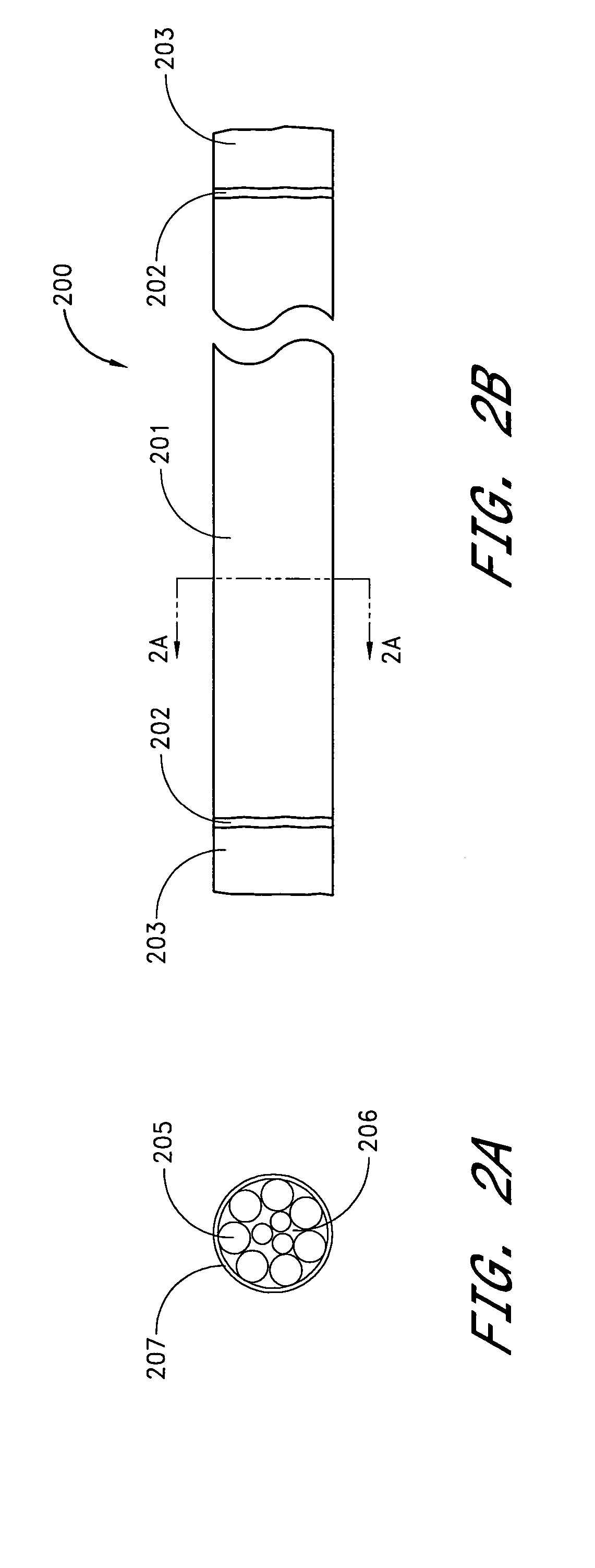Thermoelectric heterostructure assemblies element
a heterostructure and heterostructure technology, applied in the field of thermoelectrics, can solve the problems of te materials, te materials, and difficult attachment of suitable thermal heat transfer members and electrodes to individual heterostructure assemblies, and achieve the effects of reducing shear stress, reducing power density, and reducing power density
- Summary
- Abstract
- Description
- Claims
- Application Information
AI Technical Summary
Benefits of technology
Problems solved by technology
Method used
Image
Examples
Embodiment Construction
[0030]Several embodiments of thermoelectrics are disclosed where layers of heterostructure thermoelectric materials or thin layers of thermoelectric material form a thermoelectric element. Advantageously, the layers are of the same conductivity type (N-type or P-type) for each thermoelectric element. In one embodiment, the layers are of the same, or at least substantially the same, thermoelectric material. Where the layers are heterostructures, the heterostructures themselves may be formed of layers of thermoelectric material. The layers may be bound together with agents that improve structural strength, allow electrical current to pass in a preferred direction, and minimize adverse effects that might occur to the thermoelectric properties of the assembly by their inclusion. Fabrication of useful TE systems requires a careful understanding of the TE materials' individual properties, such as thermal conductivity, electrical conductivity, coefficient of thermal expansion, properties o...
PUM
| Property | Measurement | Unit |
|---|---|---|
| thermoelectric | aaaaa | aaaaa |
| conductivity | aaaaa | aaaaa |
| shear stresses | aaaaa | aaaaa |
Abstract
Description
Claims
Application Information
 Login to View More
Login to View More - R&D
- Intellectual Property
- Life Sciences
- Materials
- Tech Scout
- Unparalleled Data Quality
- Higher Quality Content
- 60% Fewer Hallucinations
Browse by: Latest US Patents, China's latest patents, Technical Efficacy Thesaurus, Application Domain, Technology Topic, Popular Technical Reports.
© 2025 PatSnap. All rights reserved.Legal|Privacy policy|Modern Slavery Act Transparency Statement|Sitemap|About US| Contact US: help@patsnap.com



